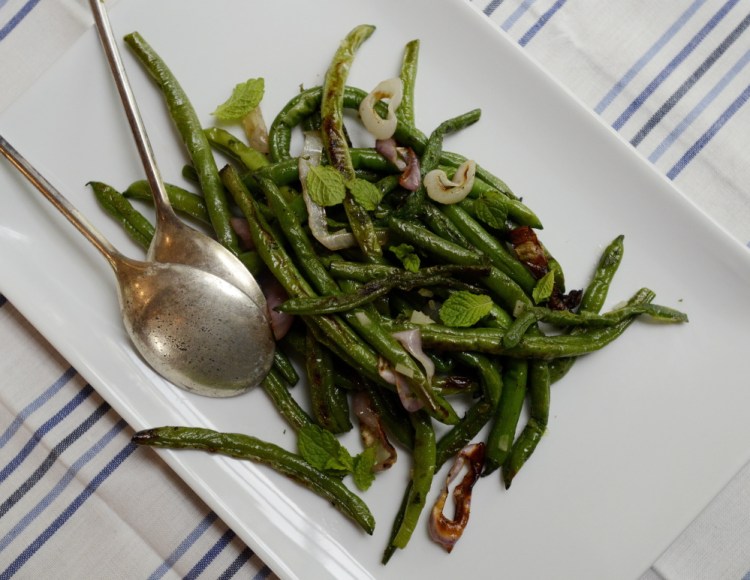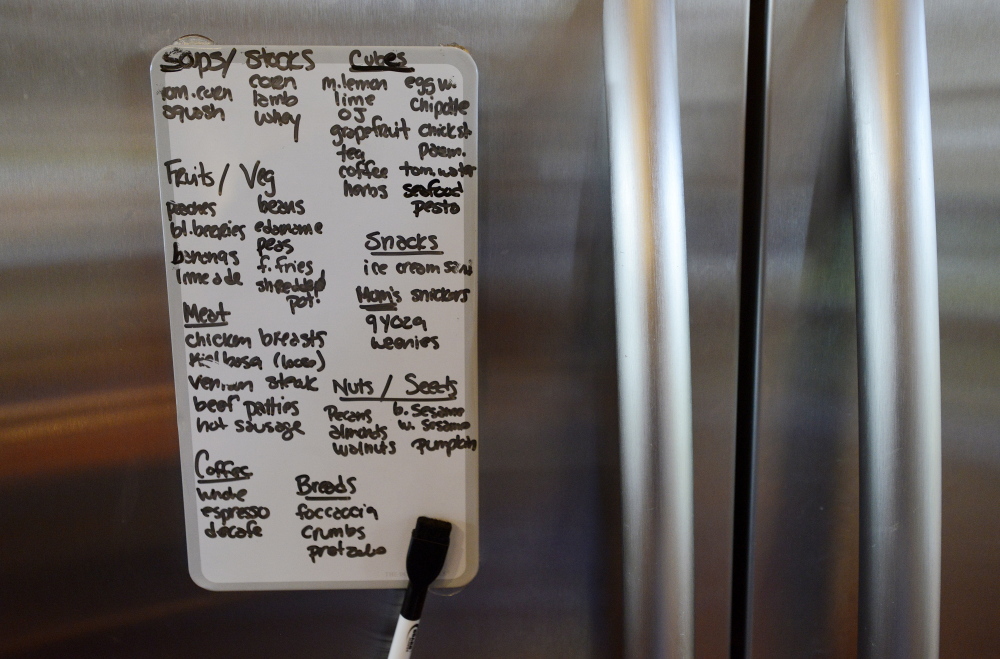It’s happened to all of us. You tiptoe into the kitchen for a late-night dip into the ice cream but when you open the freezer door, a brick of who knows what covered in ice crystals falls out onto your foot, shattering the moment, the corner of the brick’s container and a couple of metatarsals.
This recurring episode means most of us are doing this freezer thing all wrong.
Done right, the freezer is the food-waste warrior’s best friend, says Dana Gunders, staff scientist with the Natural Resources Defense Council. In a freezer, you can safely store food (fruits and vegetables, ingredients bought for a dinner that never happened, leftovers you’re tired of and useful bits like breadcrumbs and egg whites) over long periods of time.
“Freezing is easy,” Gunders writes in her new book, “The Waste-Free Kitchen Handbook” due out later this month. Losing things in the freezer is the problem, but it can be rectified by proper prep, packaging and planned usage.
For food destined for the freezer, you must know how long it might stay in there. If it’s only a few days, a tight wrap in plastic wrap or freezer paper will do the job. If longer, then vegetables should be blanched to stop destructive enzymes and yield higher quality, more nutritious items when you do eat them.
Meats should be removed from store packaging, trimmed of fat, wrapped tightly in plastic wrap and then in aluminum foil to avoid freezer burn.
Moist items (like berries, corn kernels or portioned cookie dough) should be spread out on a tray to freeze individually and then bagged for storage. Watery items (like tomatoes and melons) should be pureed before freezing.
Use clear, airtight containers that come in or can be formed into stackable shapes, respectively plastic containers and zip-top freezer bags. Divide food into portions you’ll use in one meal. Gunders suggests slicing loaves of bread, forming ground meat into patties and freezing soup portions in muffin tins before bagging them. All containers should be nearly full to help prevent ice crystals from forming on the food.
From a green point of view, this seems like a lot of plastic. Kate McCarty, a food preservationist at the University of Maine Cooperative Extension, recommends glass canning jars. But since all foods expand in the freezer, she says, each glass jar should have about ½ inch head room to allow for that.
A freezer should be packed to allow for both airflow and organization. Items should be stacked tightly but not shoehorned into every available space. Food intended for freezing should be added gradually. The National Center for Home Preservation says not to add more than 3 pounds of food per cubic foot of freezer space in a 24-hour period.
Gunders, a committed labeler, says every package should be clearly marked with its contents and the date. Alternatively, McCarty suggests signature containers for certain items. For example, 2-cup containers with blue tops hold the kids’ carrot soup and 1-cup ones with red tops hold the Sungold tomato soup you keep for yourself. Also, smaller snack bag bundles of things like garden peas can be stored unlabeled in a larger bag labeled just once, says McCarty.
Both women agree that a white board posted on the outside of the freezer listing what it contains saves both time for the eater in search of something good to eat, and energy for the appliance working hard to keep its internal temperature constant.
ROASTED GREEN BEANS WITH GARLIC AND GINGER JUICE
I assisted Molly Stevens during a cooking class when she was promoting her book, “All About Roasting: A New Approach to a Classic Art.” We made these beans during that class. Extracting the juice from grated ginger and using it to flavor roasted green beans and shallots is a great variation on the norm. Since frozen green beans rarely (never?) taste as good as fresh if simply thawed and warmed in butter, I’ve adapted this recipe for them. The roasting time – adjusted because Stevens’ recipe calls for fresh beans – takes care of any mushiness worries.
Serves 4
1 pound frozen whole green beans
3 shallots, sliced into rings about 1/3-inch thick
2 tablespoons olive oil
Kosher salt and freshly ground black pepper
1 (2-inch) piece of fresh ginger, about 2 ounces
1 garlic clove, finely minced
2 tablespoons roughly chopped mint or cilantro
Preheat the oven to 450 degrees F. with a rack set in the center of the oven. Line a heavy-bottomed, rimmed baking sheet with parchment paper.
Place the beans and shallots on the prepared baking sheet; drizzle with oil and season with salt and pepper; toss to combine. Transfer to the oven and cook, until the beans are tender and browned in spots and beginning to shrivel and the shallots are browned in spots, 20 to 25 minutes, tossing once or twice during cooking.
While the beans roast, use a microplane to grate the ginger. You should have about 2 tablespoons grated ginger. Squeeze the ginger through a strainer or piece of cheesecloth into a serving bowl, extracting as much liquid as possible. You should have about 1 tablespoon ginger juice. Discard the ginger fibers.
Immediately transfer the beans and shallots to the serving bowl and add the garlic and ginger juice; toss to combine. Add cilantro or mint. Season with salt. Serve warm or at room temperature.
Christine Burns Rudalevige is a food writer, recipe developer and tester, and cooking teacher in Brunswick. She writes about feeding her family Maine seafood at www.familyfish.net. Contact her at cburns1227@gmail.com.
Send questions/comments to the editors.




